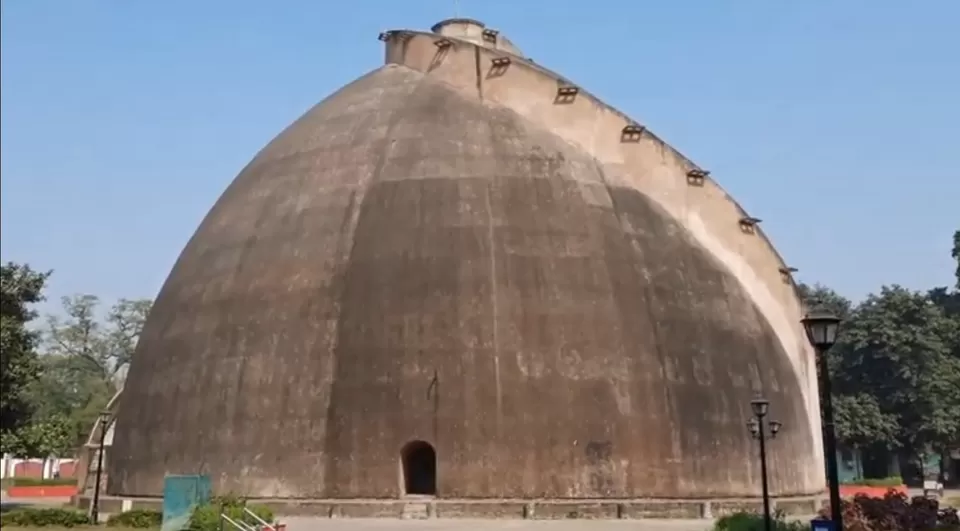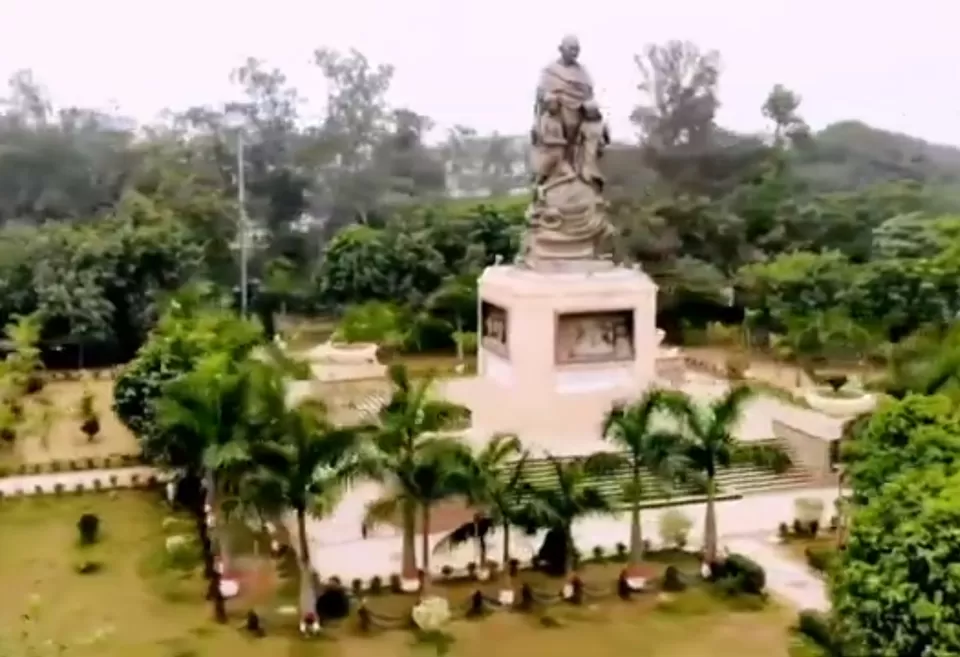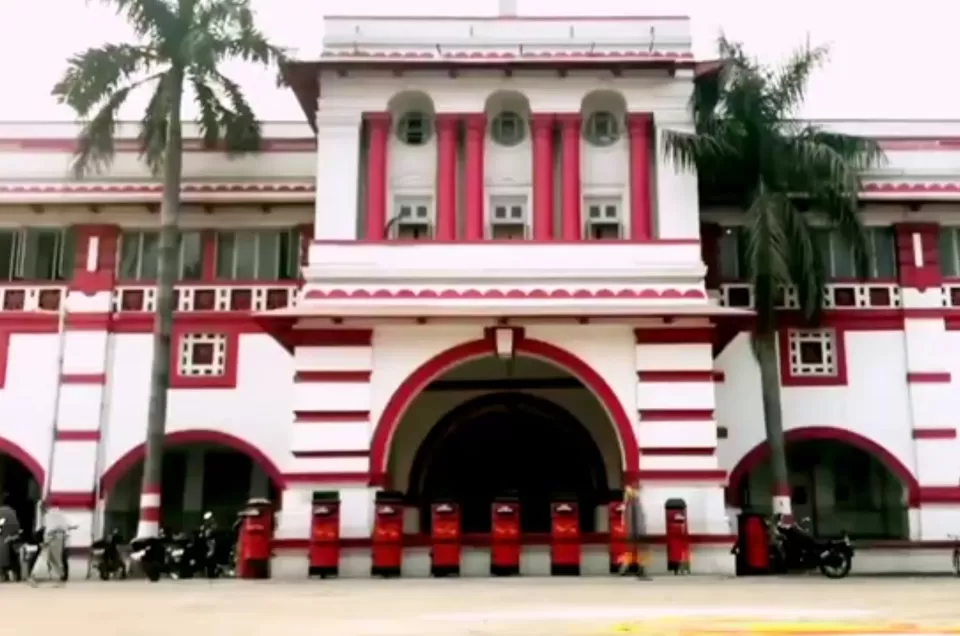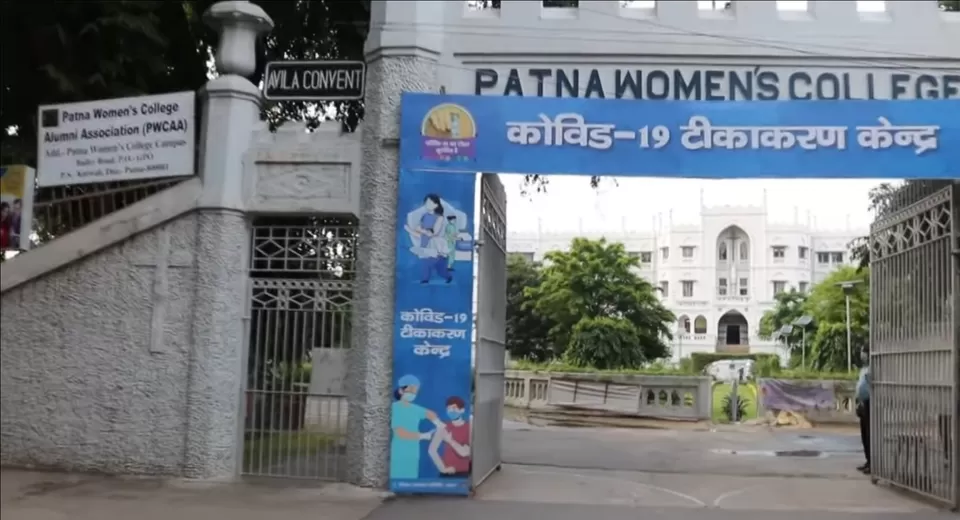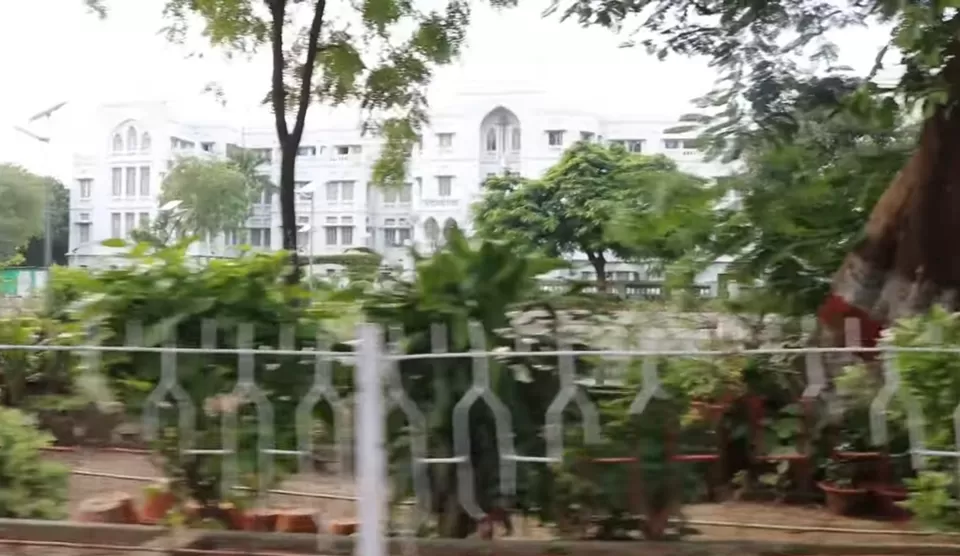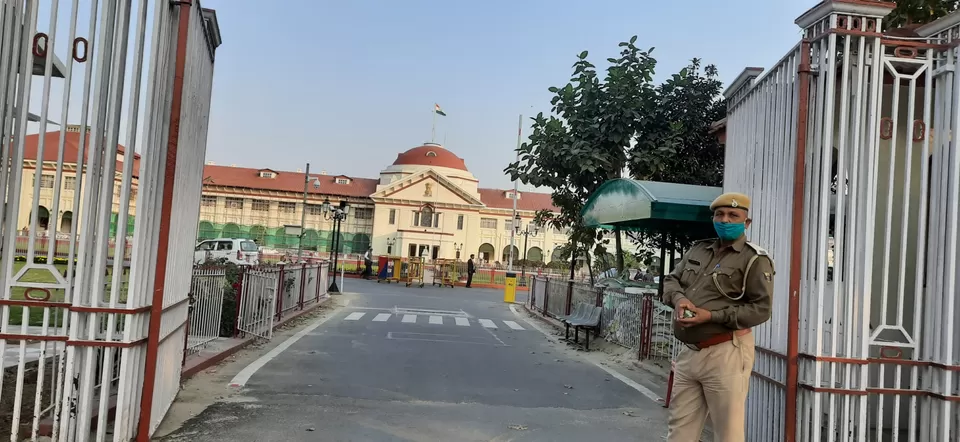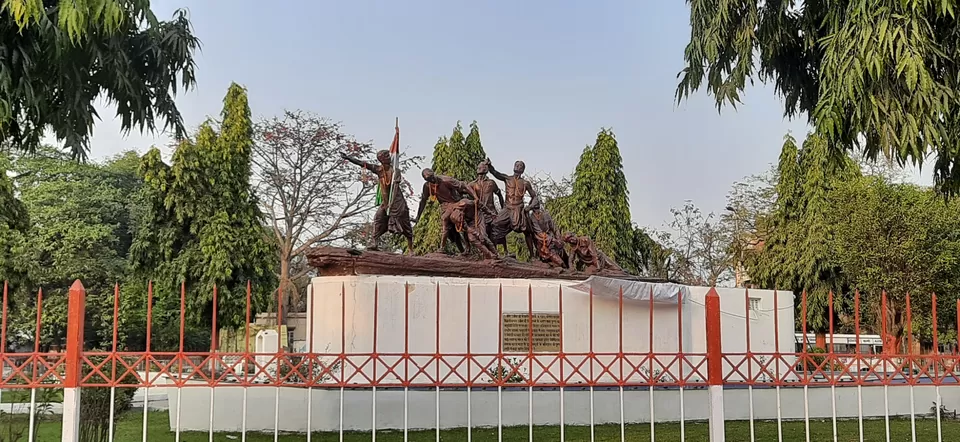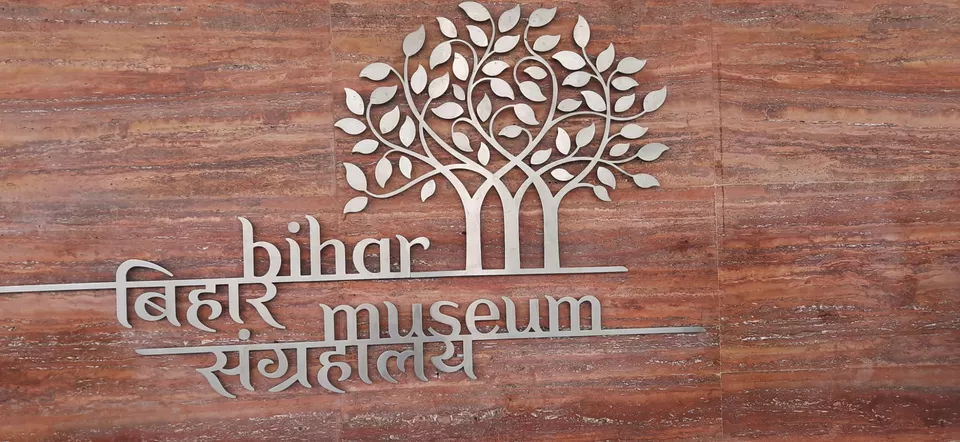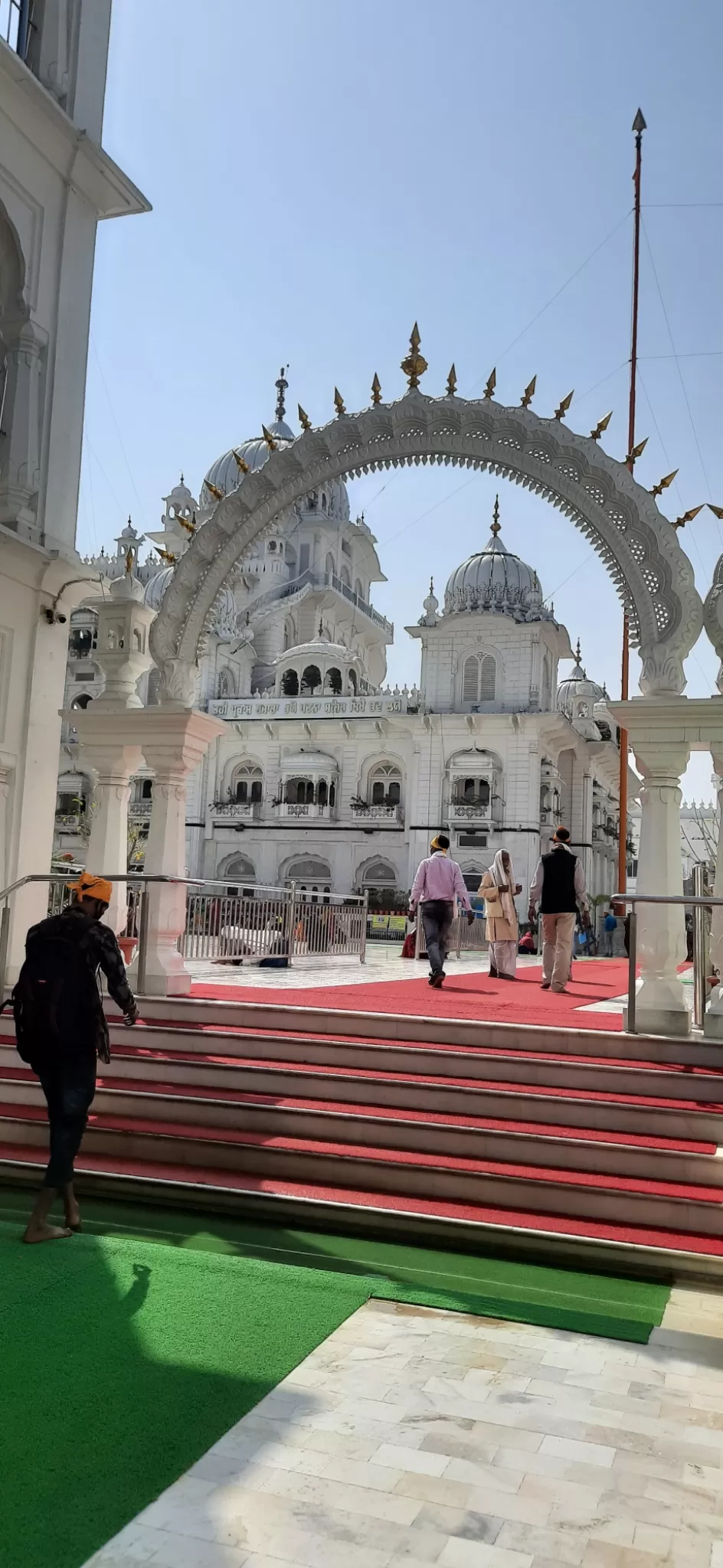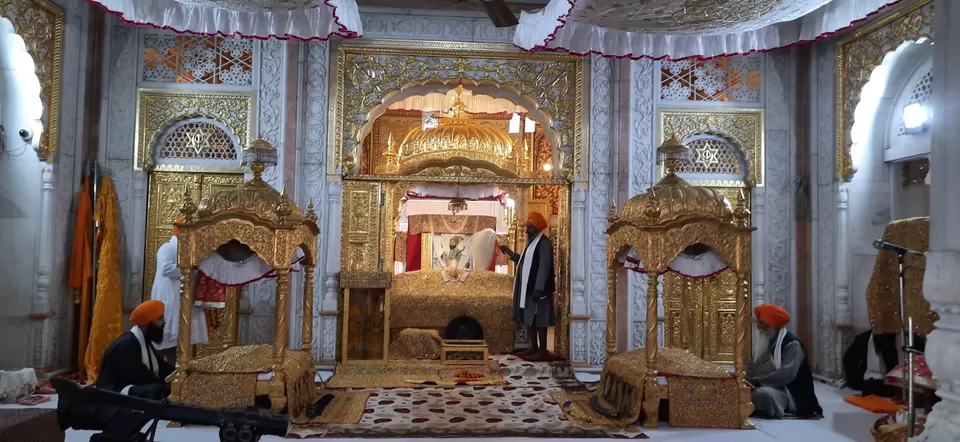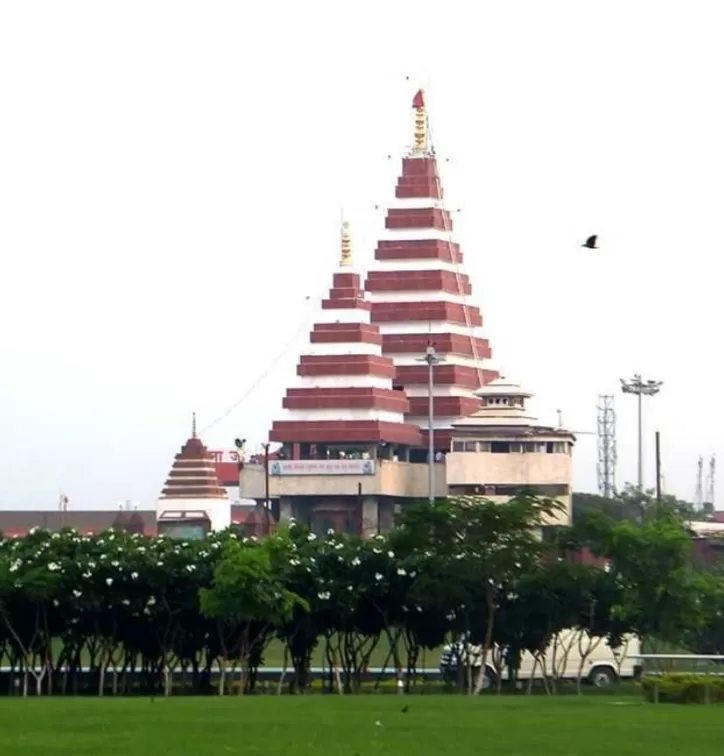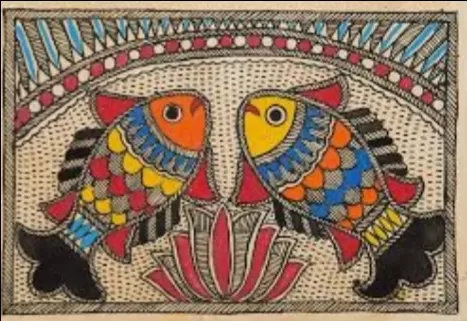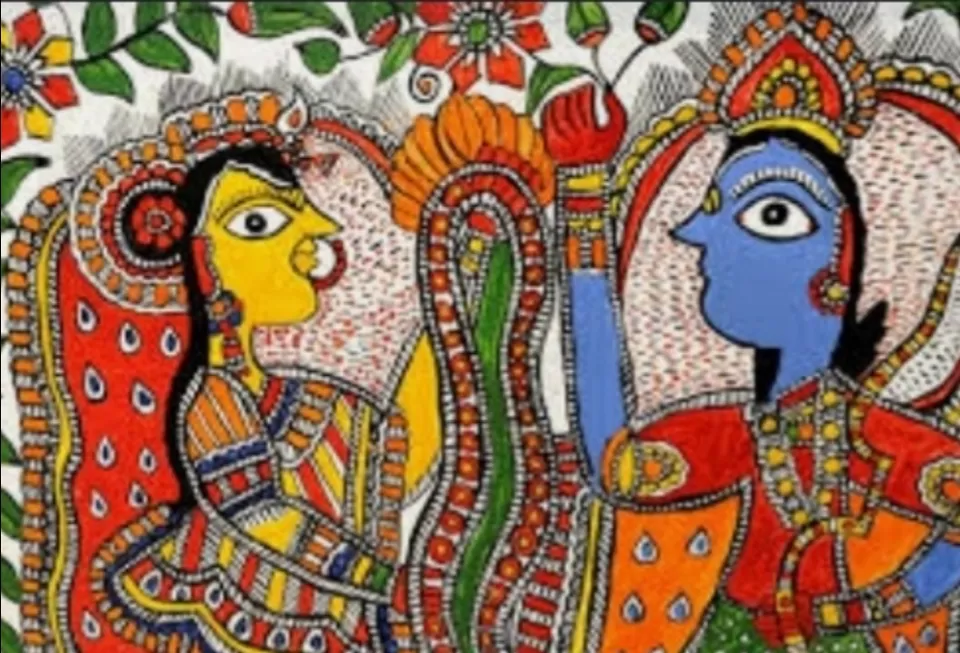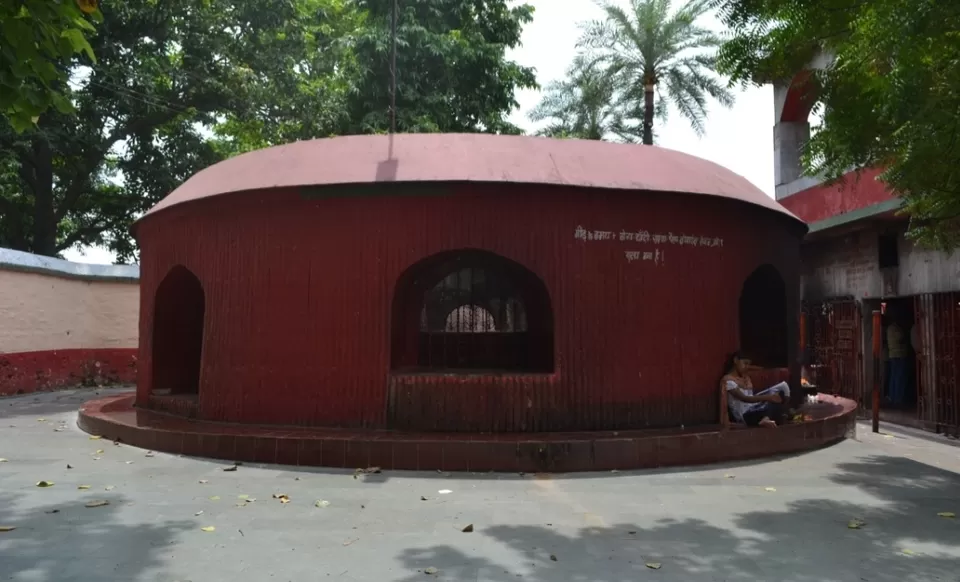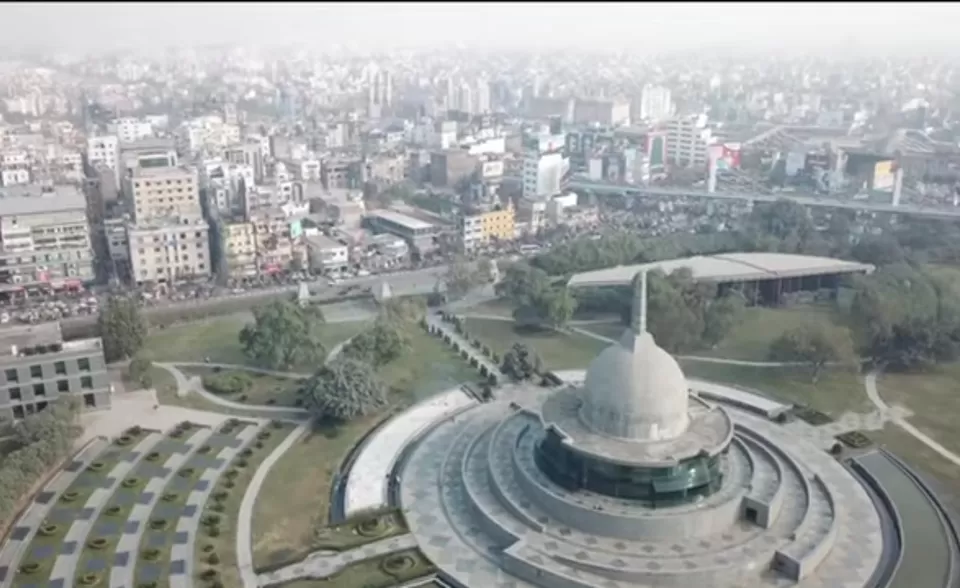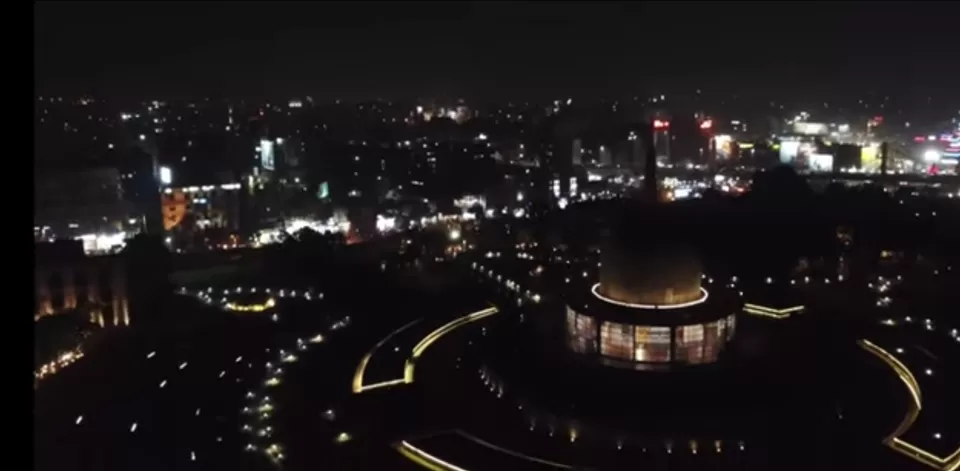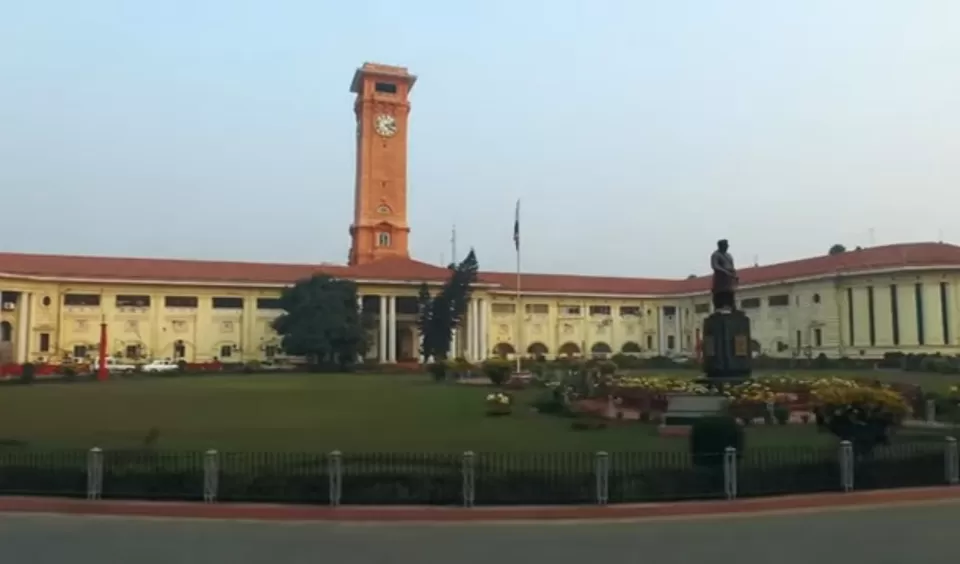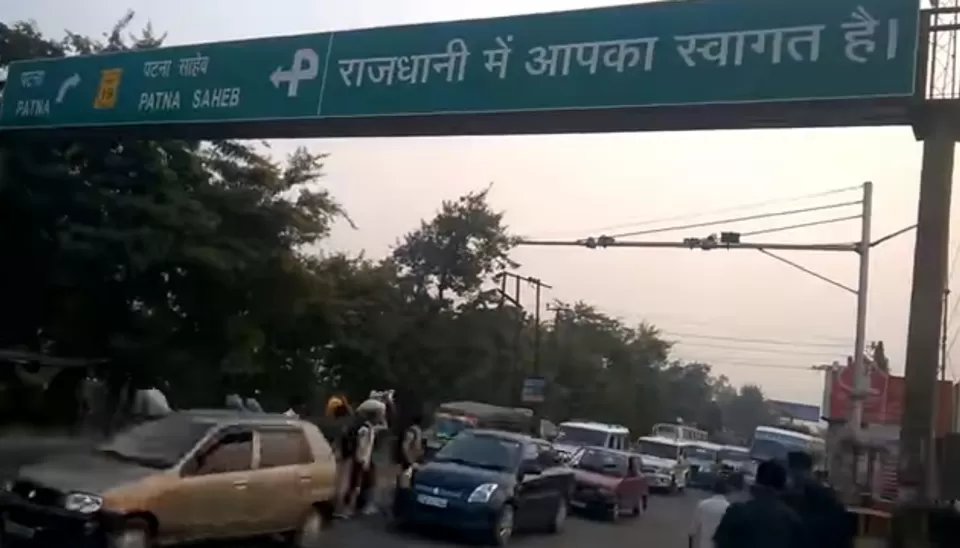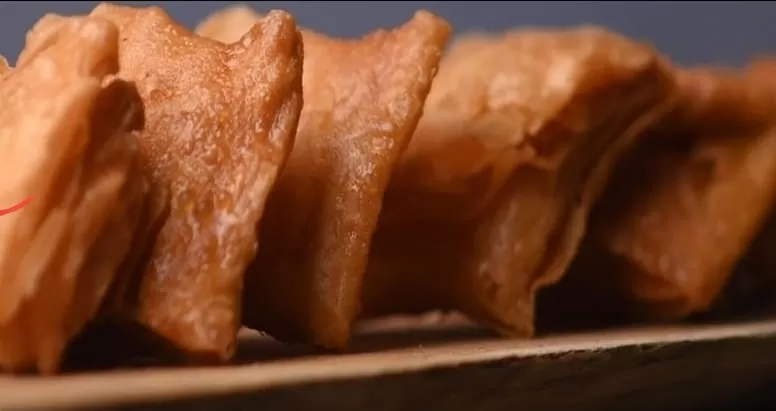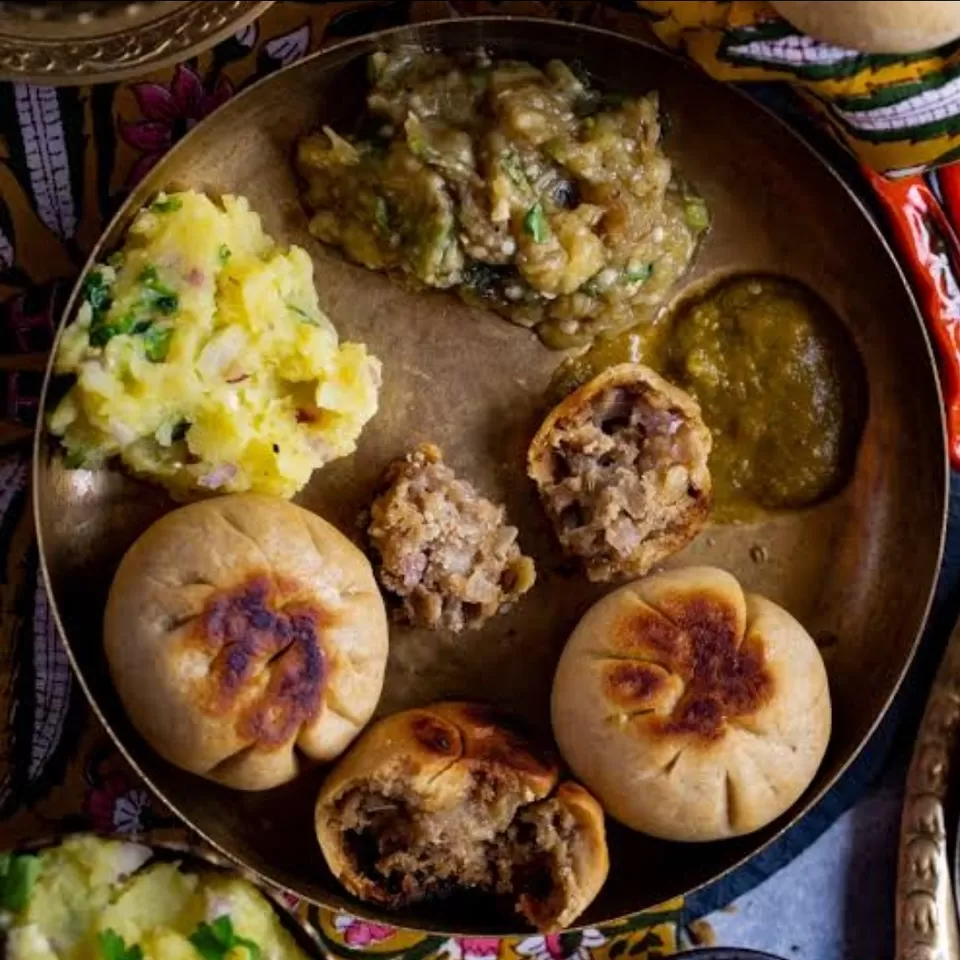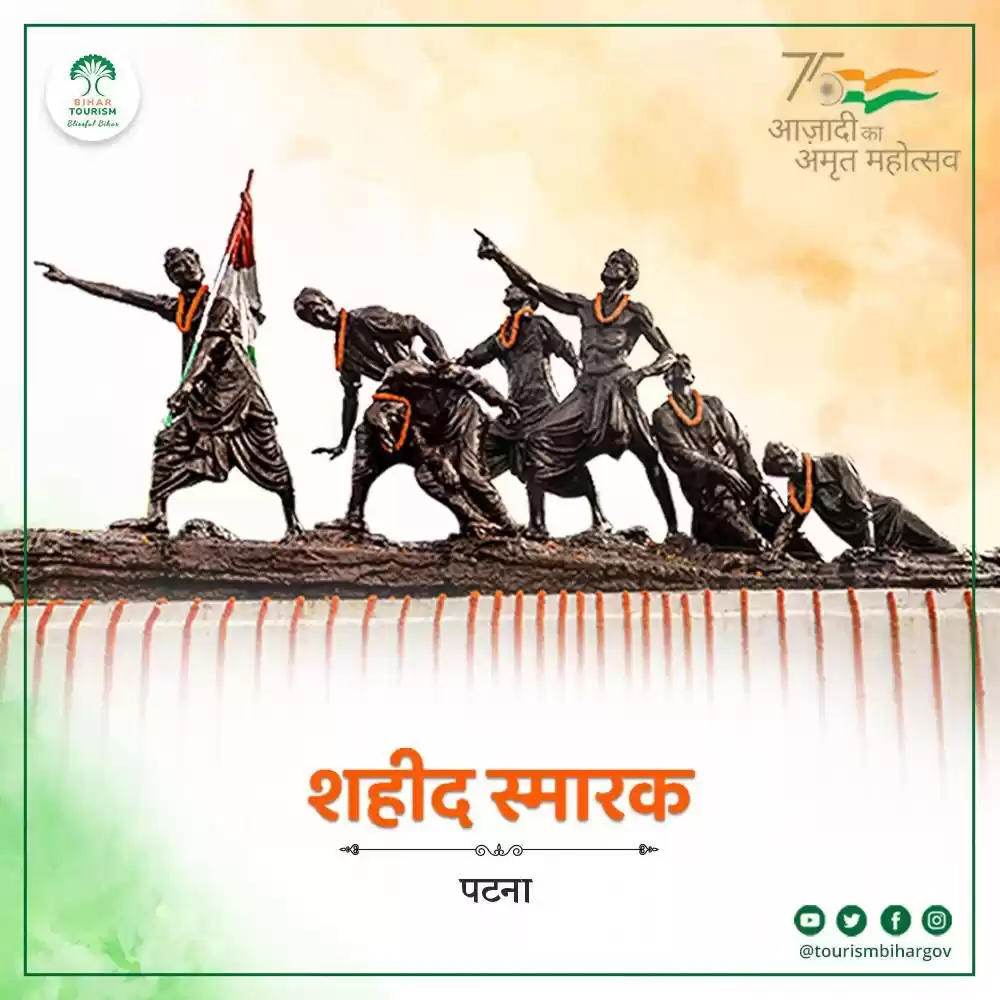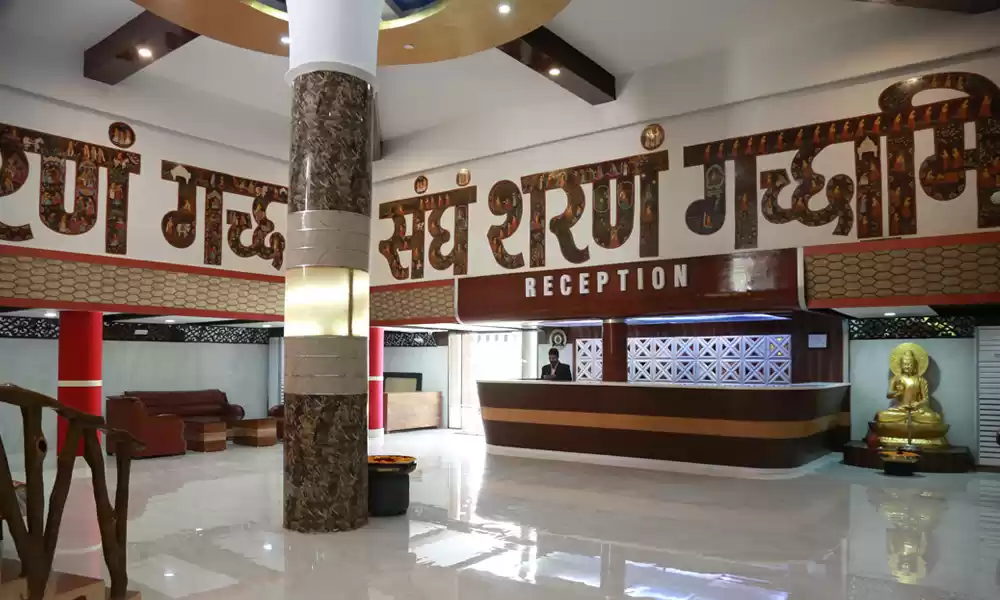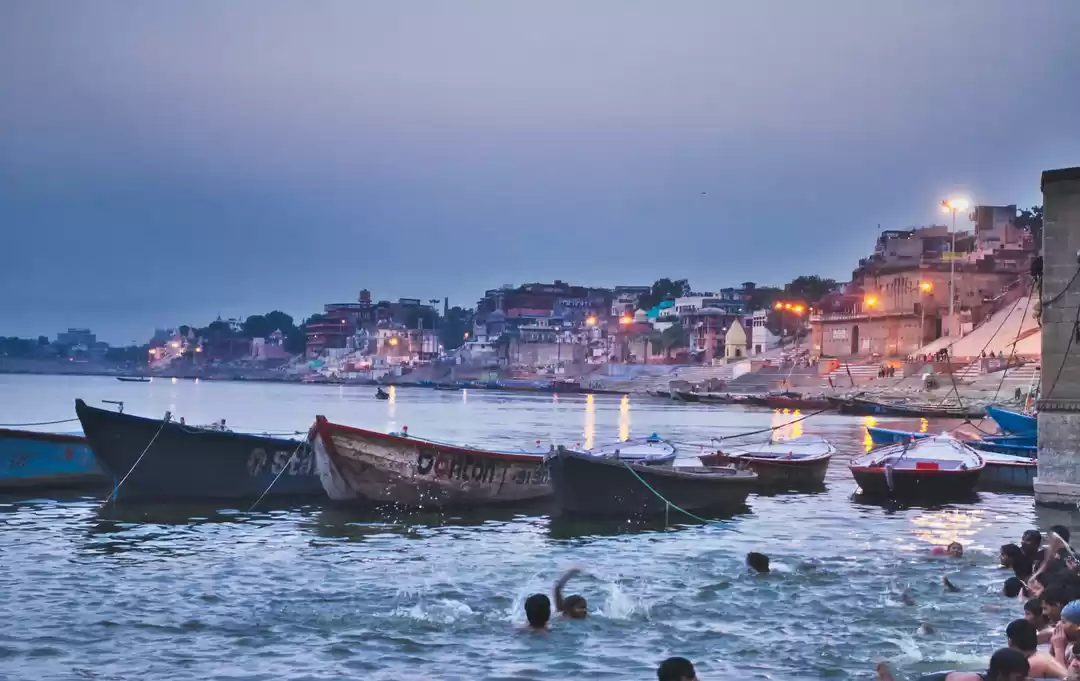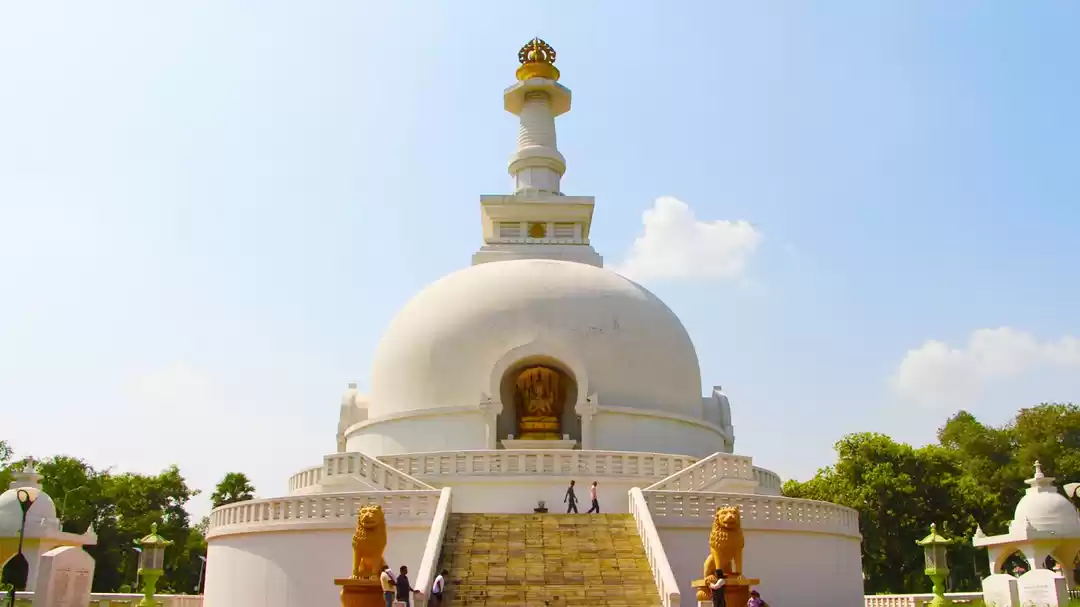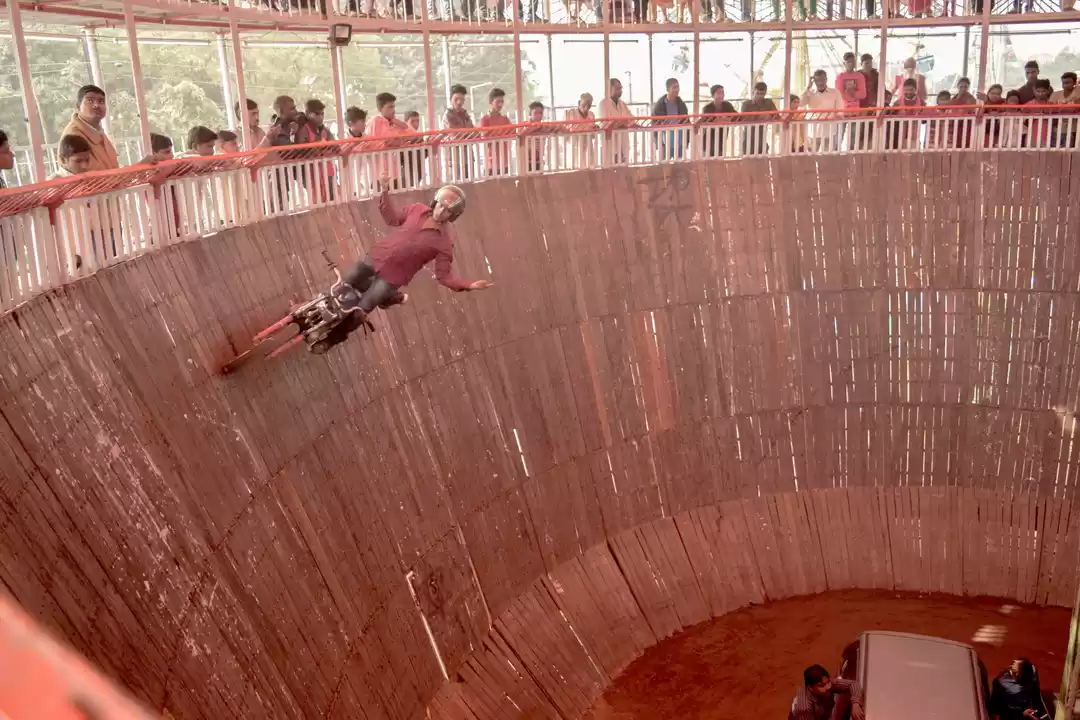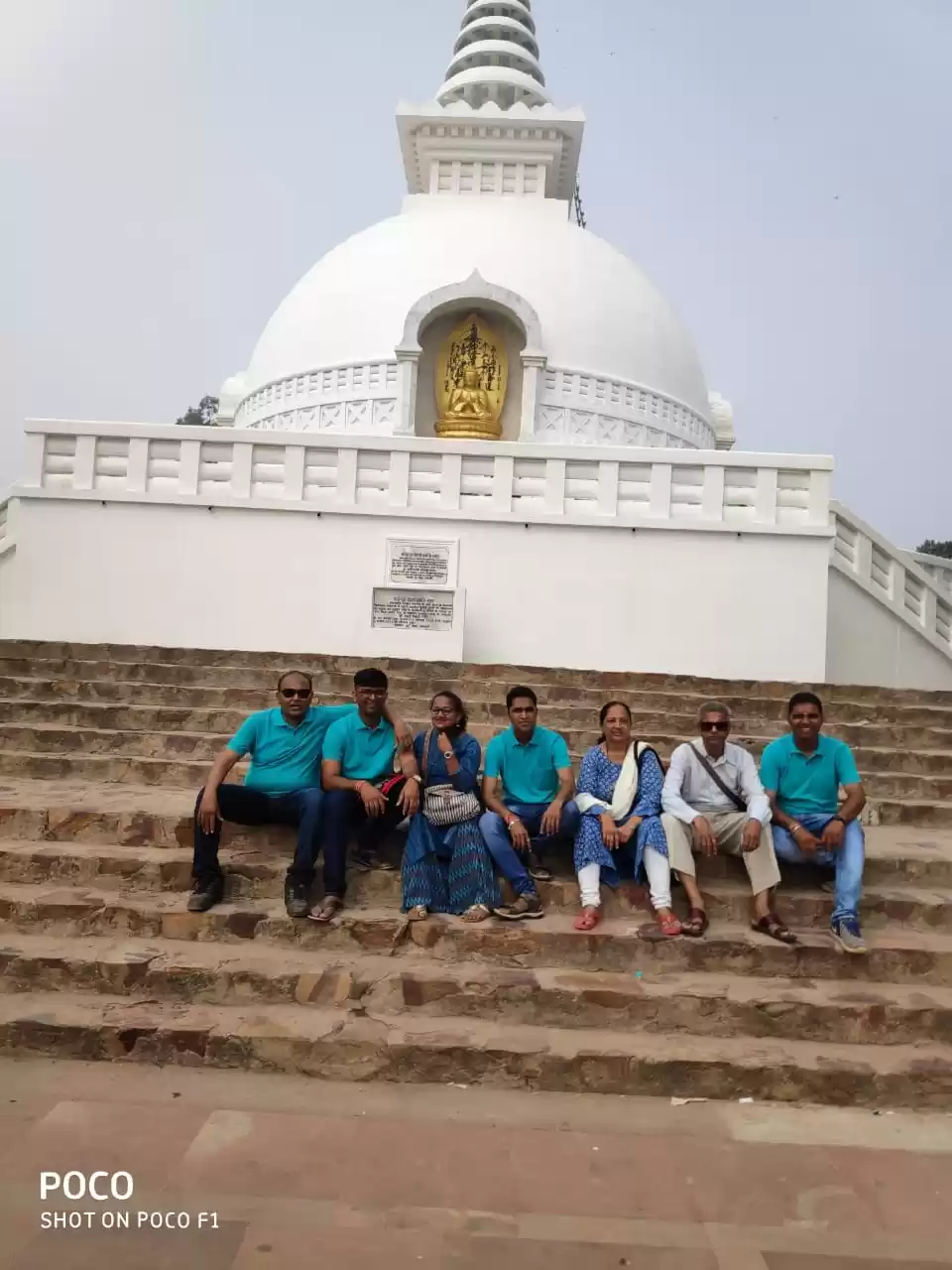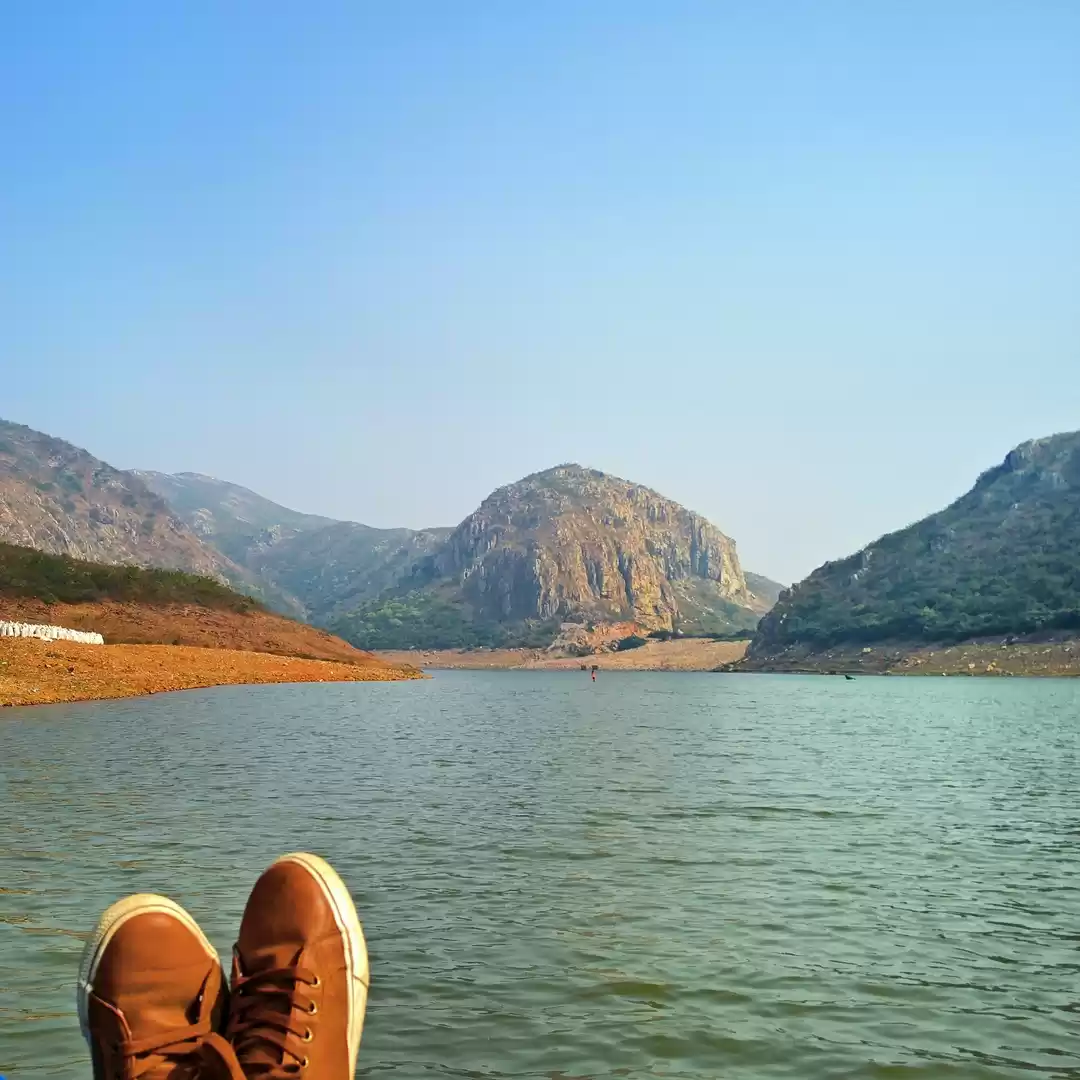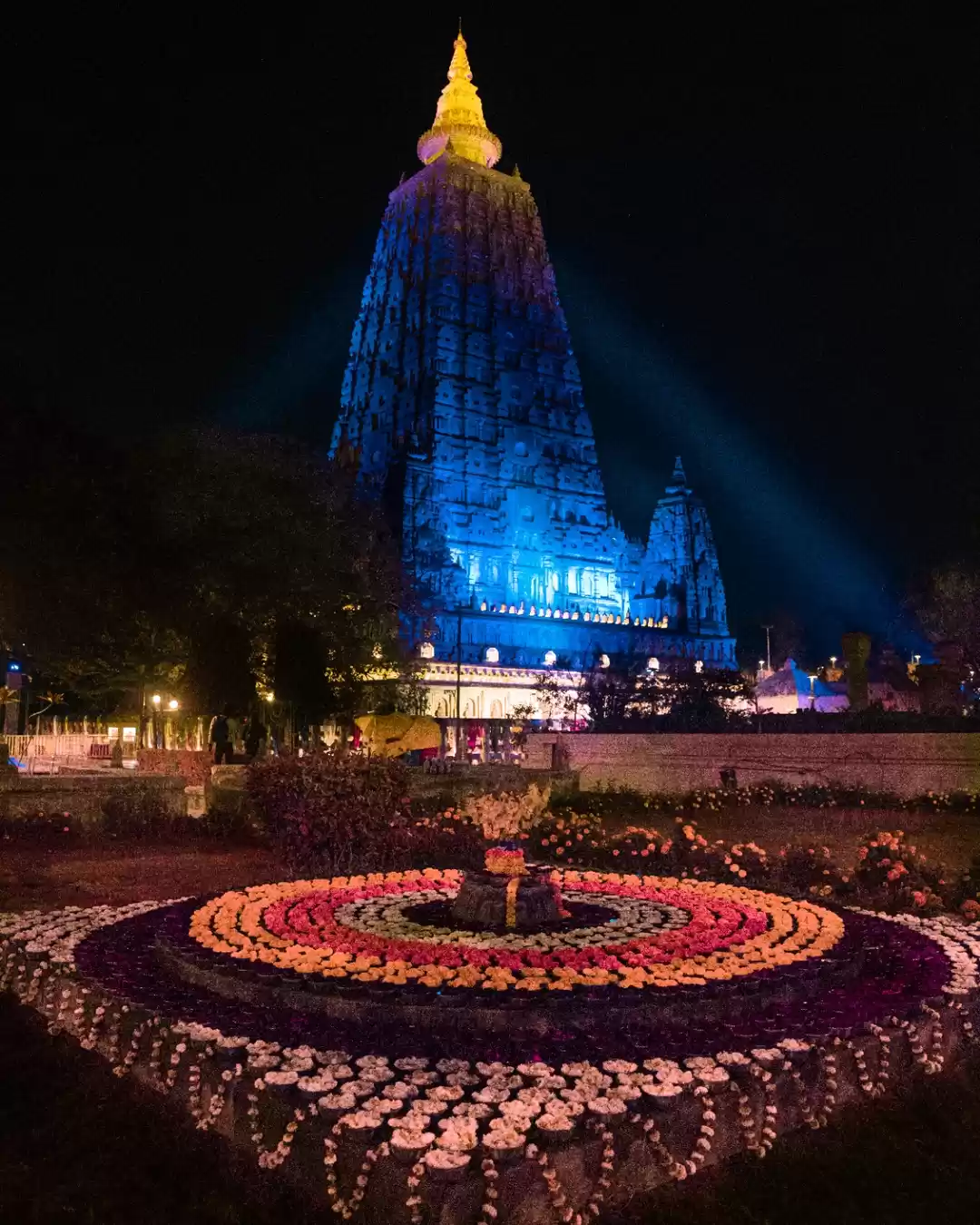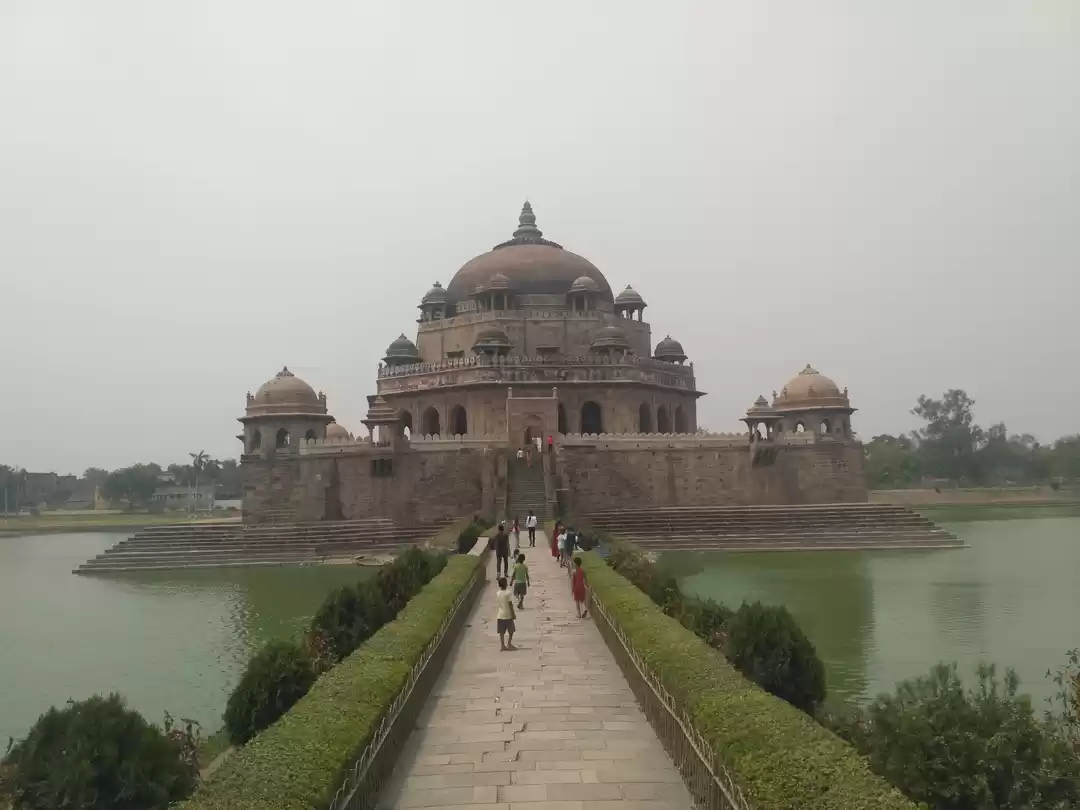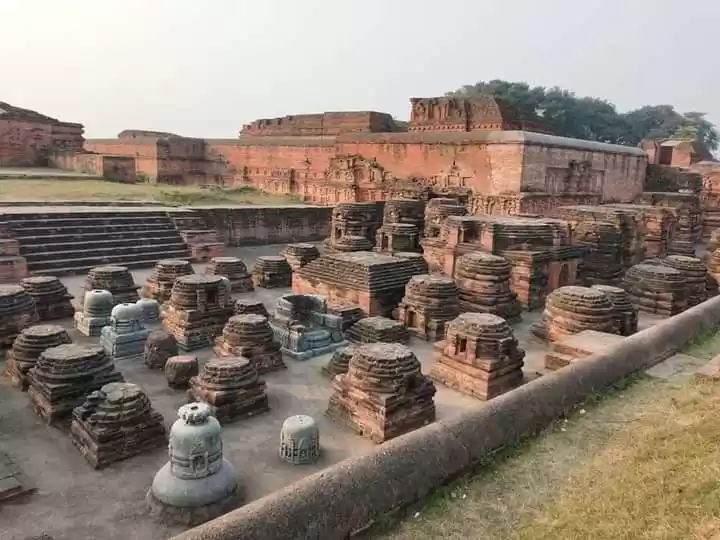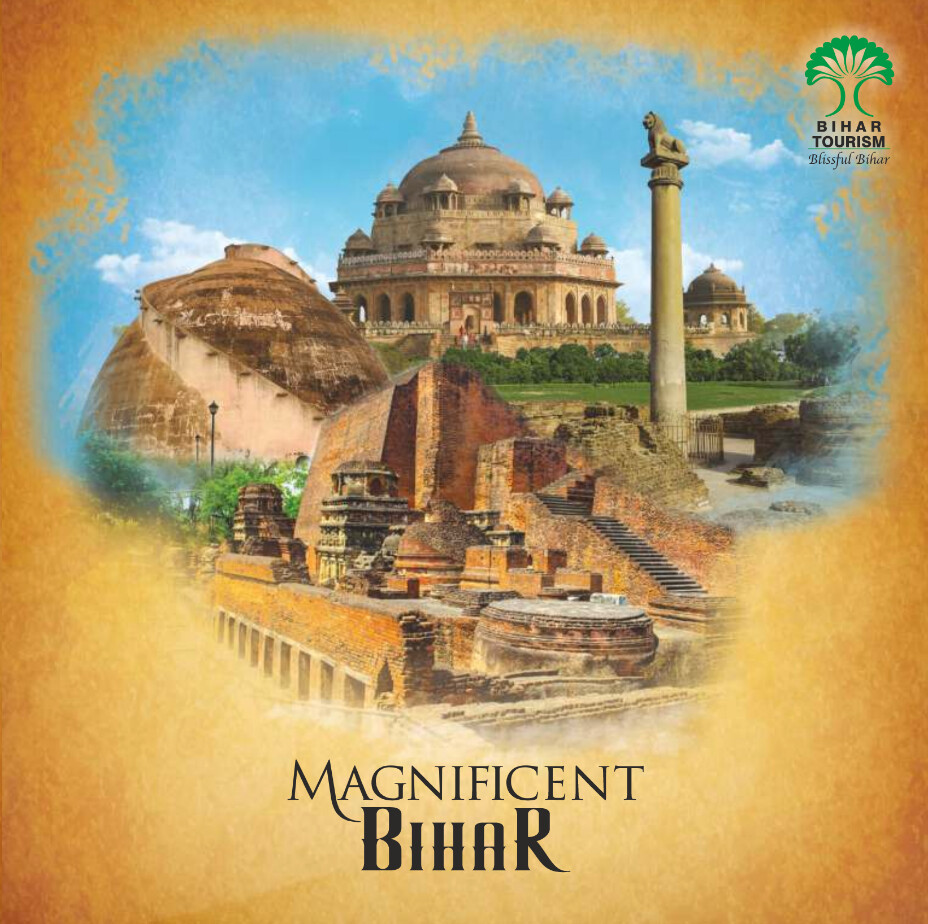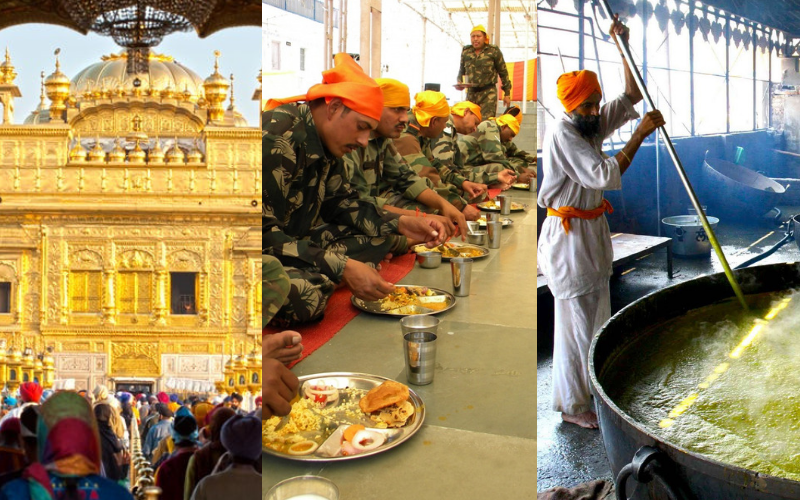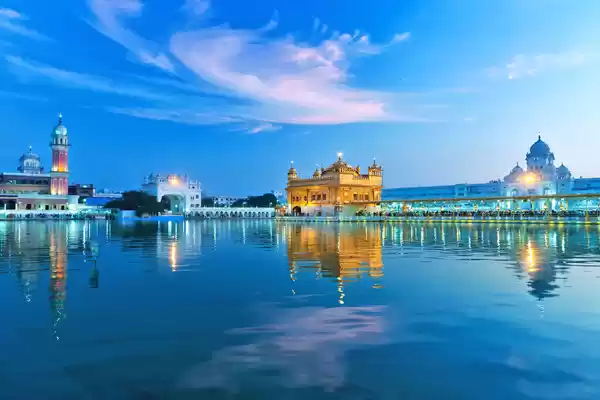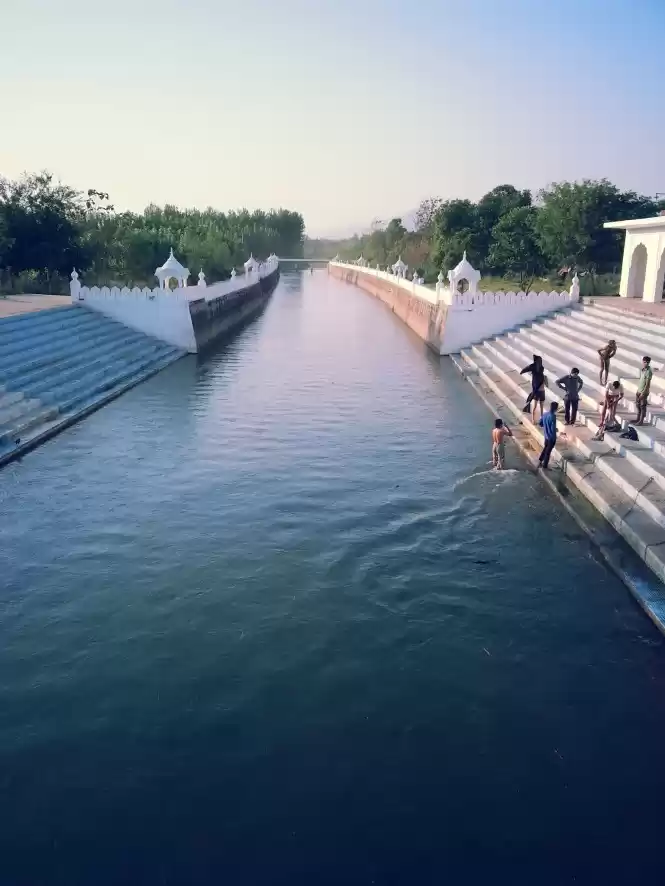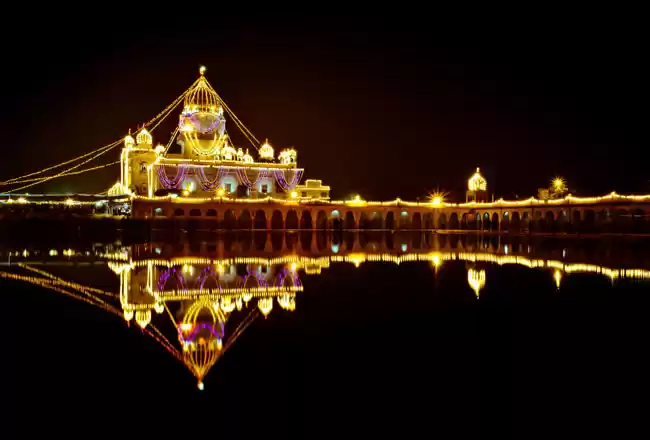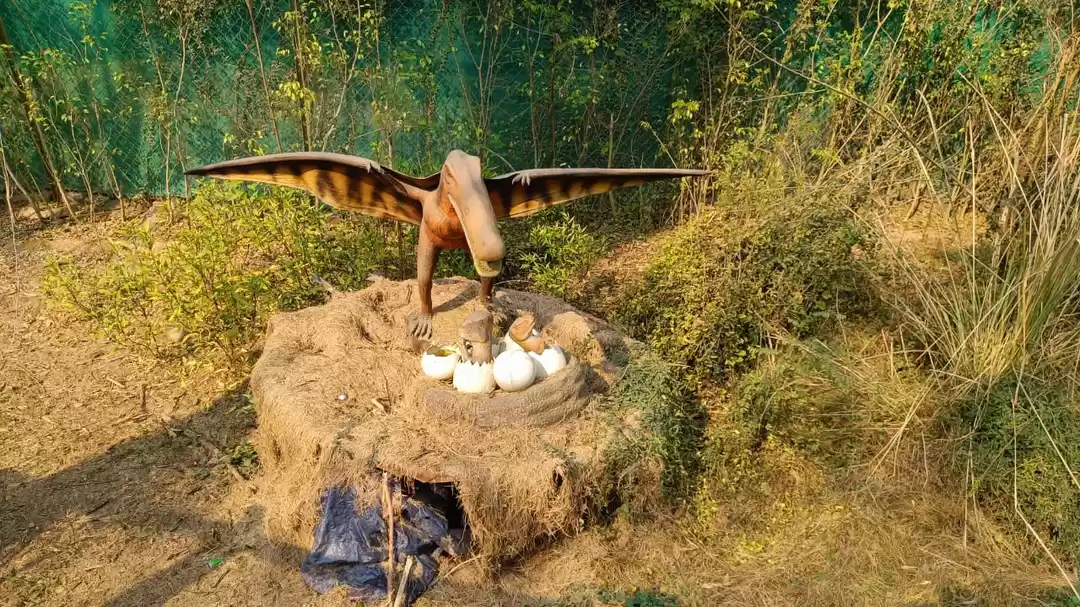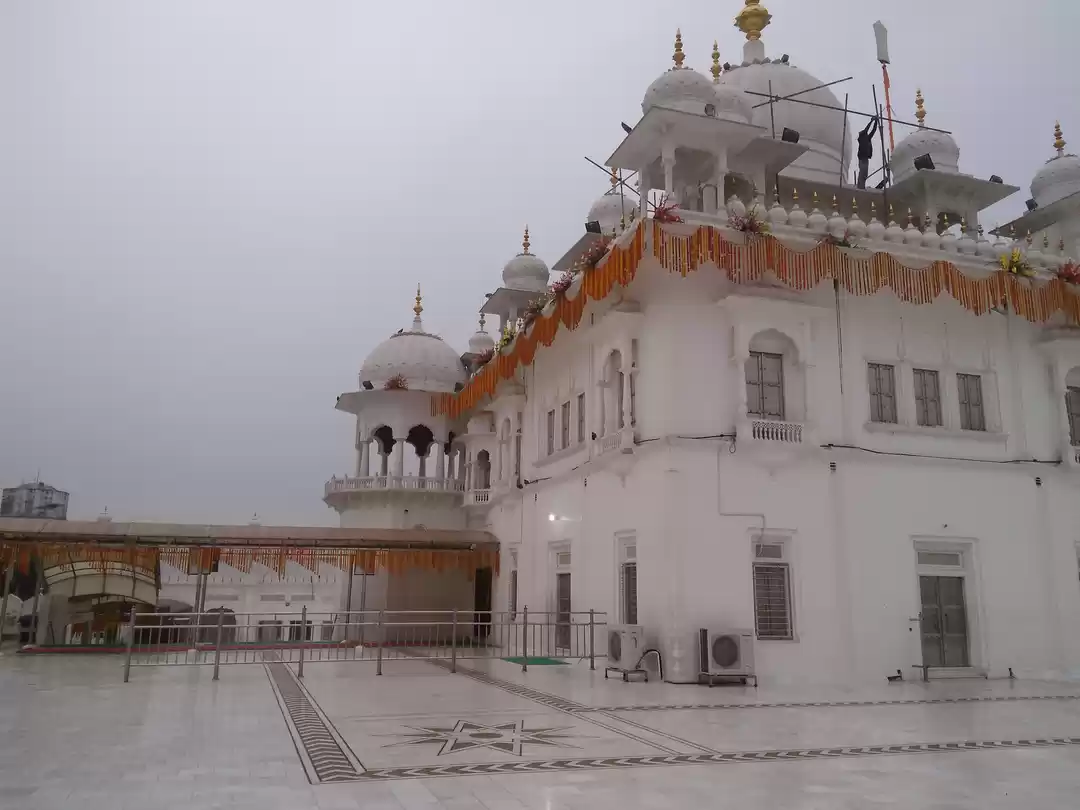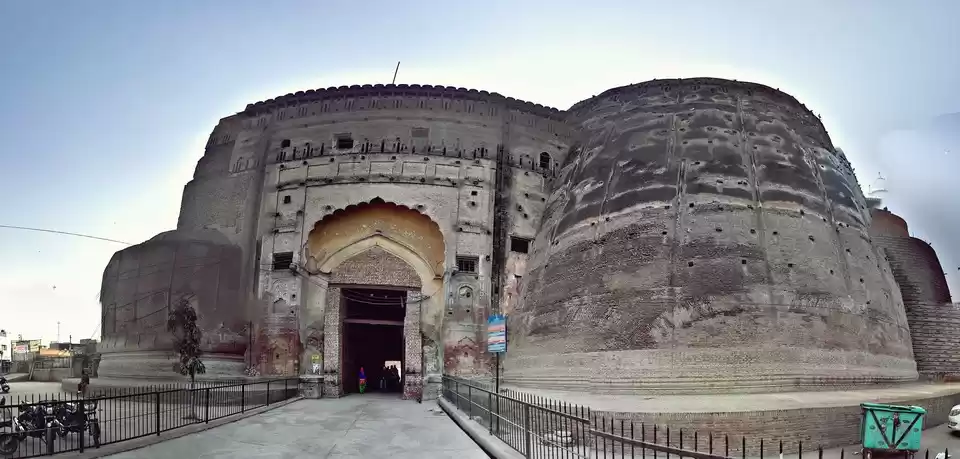I was in Patna for some work towards the end of February, and I fell in love with the city. Beautiful Palash trees in bloom added beauty to this historic city! I was hosted by a beautiful couple my friends, which made my stay very pleasureable.
Patna is the culmination of centuries of historical glory and political fortunes ,going back to the earliest dawn of civilization. The original name of Patna was Pataliputra or Patalipattan and its history starts from 600 B.C.
Capital of the Maurya and Gupta empires. The ancient city of Patliputra, is
at the site where Patna is today, with a glorious period of history spanning a thousand years (500BC- 400AD), saw the rise and fall of India's first major kingdoms.
This city was the fountainhead of knowledge and wisdom in ancient times.
The city tweets of a glorious past and perches on the briskness of a bustling up-and-coming metropolis. West of the city lies Bankipur, while towards the Southwest is the new area with wide roads and swanky buildings.
Patna has been home to great religions, Buddhism , Sikhism and Jainism, and myriad dynasties from ancient to modern times.
Lying along the banks of the Ganges River, Patna is an important business and education centre of eastern India.
More significantly, it is a gateway to the Buddhist and Jain pilgrim centre's of Pawapuri, Nalanda,Rajgir, Vikramshila and Vaishali.
Three sacred rivers Ganga, Sone and the Poonpun, make their journey through Patna. Legend has it that a sanctified Ganga had watched with reverence as a hallowed Buddha blessed this place to be a realm of great Kings and their Empires.
Belonging to the blue family of cities with a royal heritage,it is the land where the greatest emperors of India walked, and where the greatest saints chose to preach. Guru Gobind Singh, the 10th Sikh Guru was born here. For anyone with a taste for history and religion, this place flies !
Under the Mughals it was a powerful provencial city and in the 17th century emerged as an important center of trade being on the banks of the Ganga.
The East India Company set up a factory here in 1520 and then other European powers came here. Echos of this period can be seen in the rich heritage buildings here which reflect the importance of the city and how it once was!
Sadly today much of that periods heritage has been destroyed. Pressure of population growth and fight for land is destroying this heritage!
The cultural heritage of Bihar is reflected in the many monuments housed in Patna, the most famous ones being
Takht Shri Harmandir Sahib, popularly known as Patna Sahib Gurudwara. The Gurudwara is regarded as the epicentre of Sikhism in Eastern India.
Patna Sahib is the second acknowledged and accepted Takhts of the Five total Takhts in Sikhism, which means 'Seat of Authority'.
Guru Gobind Singh ji , the tenth Sikh Guru, was born in Patna, Bihar, on 22 December 1666. He also spent his early years here before moving to Anandpur Sahib. Besides being the birthplace of Guru Gobind Singh, Patna was also honored by visits from Guru Nanak Dev Ji as well as Guru Tegh Bahadur Ji.
A Major attraction Prakash Parv or birth anniversary of Guru Gobind Singh ji is celebrated in December every year.
The Gurudwara houses a museum inside its premises, which mainly exhibits artefacts concerning Guru Gobind Singh ji and Sikh history.
Patna High Court is hailed as one of the finest specimens of European architecture! A magnificent and majestic neo classical style based Palladian design. Designed by the renowned architect Mr. Munnings. In the year 2016 this iconic building celebrated its Centenary!
Patna Women' s College founded in 1940, was the first institution of higher learning opened to cater to the educational needs of women in Bihar.
The 18th century Khuda Baksh Oriental Public Library houses some very ancient manuscripts.
Sadaqat Ashram is where the first president of India Dr. Rajendra Prasad spent his retirement days. A museum exhibits his personal belongings!
Golghar the Stupa shaped granary, boasts of offering panoramic views of the city in the backdrop of the Ganges, after a climb of 154 steps!
Rising from the midst of a lush green garden , the Stupa shaped structure is a sight to behold! It's sublime natural settings is one of the many spots in the city which citizens visit for a respite from the hustle and bustle.
The purpose behind the construction of Golghar was not tourism.
In the aftermath of the famine of 1770, nearly 10 million people died in Bengal, Bihar and modern day Bangladesh. Warren Hastings, then Governor-General of India made a decision to build huge storages for grains to be used in case of natural calamity like famine, etc. He wanted to be sure in the future, adequate food supply should be available to face any untoward situation. He was more concerned about the food security of his army men than about ordinary citizens. He preferred stupa-like beehive shaped huge structure.
Conceived and built by Captain John Garstin, an engineer with the East India Company, Golghar has storage capacity of 140000 tons.
Bihar Museum The museum’s collection of artefacts and artworks on exhibit tell the story of Pataliputra and Bihar from ancient times to the 18th century. Some of the highlights of the museum include world-famous Didarganj Yakshi statue, a gallery dedicated to Mauryas, Nandas, Shaishunaga Dynasty, and the Indus Valley Civilisation.
The museum's main attraction is the Didarganj Yakshi.
Patandevi Temple is one of the most revered temples in Patna, considered to be the abode of Goddess Durga.
Visit Mahatma Gandhi Setu see the longest river bridge in India, and head to the most popular Gandhi Ghat to enjoy the views of the River Ganges, and participate in the evening aarti. A boat ride in the Ganges in the months of October-March could be mesmerizing with its serene and captivating surroundings.
Agam Kuan is an archaeological site related to numerous myths and legends over the years. The most popular association is with Mauryan king Ashoka. The well is mentioned as the ¥hell on earth' in many accounts, which was probably once a part of Ashoka's infamous Hell chambers used for torture before embracing Buddhism. People now treat the well with veneration and throw in flowers and coins to get their prayers and wishes heard.
Buy beautiful Madhubani art!
Located on Fraser road, Ajanta is a good stopover if you are interested in buying genuine Madhubani paintings. It is closed on Sundays, so make sure you plan your visit accordingly!
Enjoy the flavours of Khaja, Litti Chokha, Thekua, Dahi Choora, Anarsa and Sattu ke Parathe!!
Bihar and beauty...sounds odd....Bihar is not what is projected by TV channels, nor is it only "Gamcha" Liiti Chokha and Bhojpuri! It's much more! Discover for yourself...you won't be disappointed!
To Reach Patna:Patna is easily accessible by Air, Road and Rail networks and is very well connected to most major cities.
Stay in Patna: There are many options from 5 Star to Budget for Travellers.
